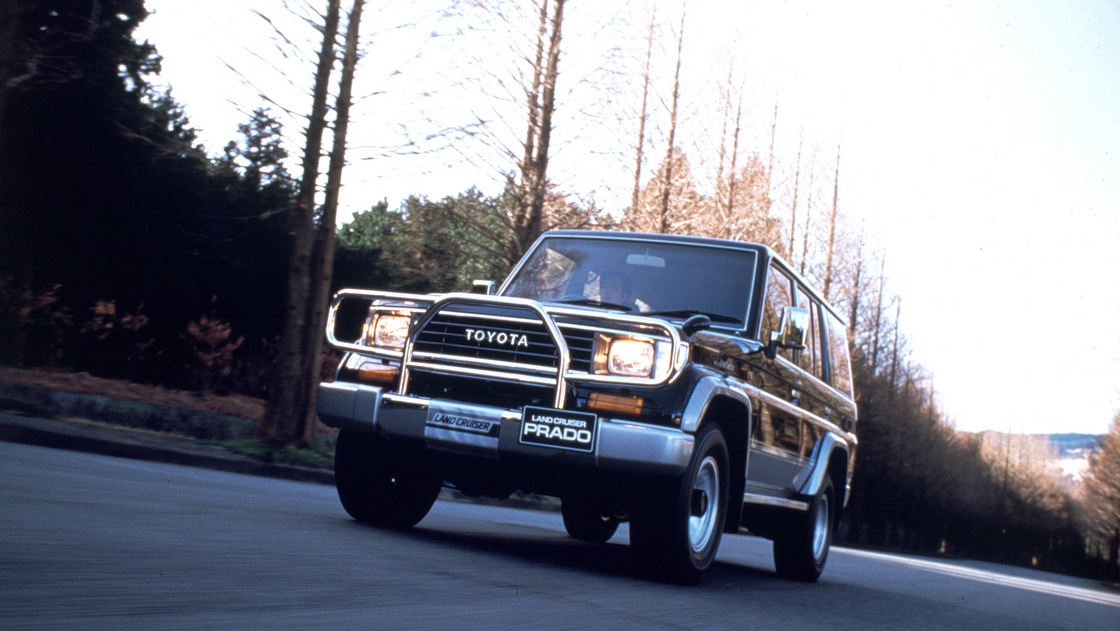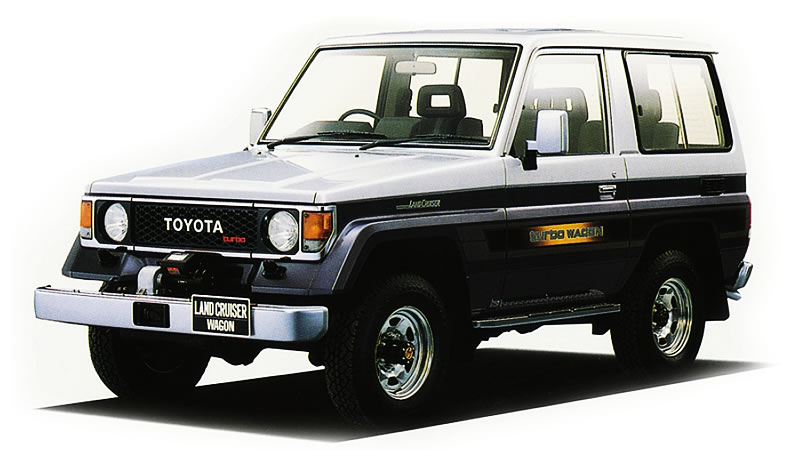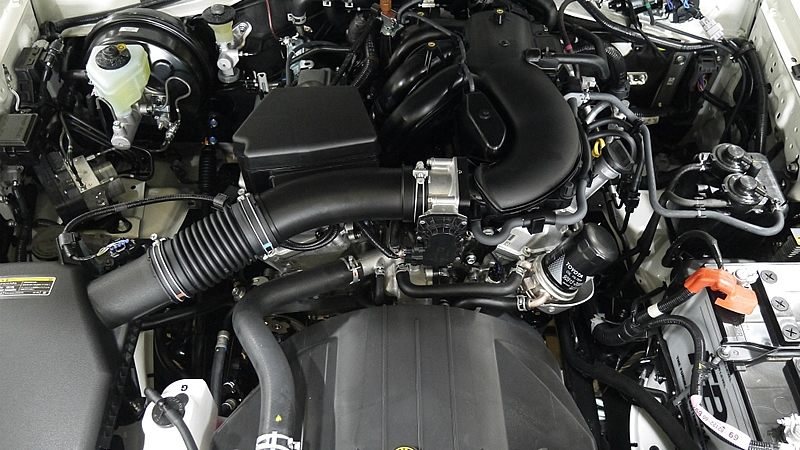Complicated and confusing Land Cruiser 70 van models
The Land Cruiser began as a single model in 1951, but it was not long before Toyota developed more models and created a large selection of vehicles to choose from. Among them, the Land Cruiser 70 series is still in operation since its debut in 1984. There are so many variations that some Land Cruiser fans may not even know they exist.
The Land Cruiser 70 series has a long model cycle and is exported to almost every country in the world, so it may be the world’s number one vehicle in terms of variation. In addition to the original chassis and body manufacturer’s specifications, some have been reconfigured once they reach their destination. If they have traveled to another country, some Land Cruiser owners may have encountered a Land Cruiser 70 series that they’ve never seen before.
Here, we will explain the types of vehicle models to distinguish such Land Cruiser 70 series variations. This will not only help you buy a used car, but it will give you a good start towards a deeper understanding of the world of the Land Cruiser 70 series.

The Japanese Land Cruiser 70 specs are based on three body styles
Toyota gives their vehicles models numbers and letters
The car model is the real name of the car given to it by the manufacturer and recognized worldwide. The vehicle inspection certificate also lists it, so you may have seen one on your certificate even if you don’t have a Land Cruiser.
Among the alphanumeric characters that make up the vehicle model, the letter common to all Land Cruisers is “J”. The reason for the “J” is that the Land Cruiser was recognized as a “jeep-type” car at a time when the Jeep, which was originally developed for military use in the United States, was considered the basic 4WD style. Other alphanumeric characters represent differences in installed engines and body types.
Here is an example: Vehicle model: KG-HZJ76K
This model is a 4-door/semi-long Land Cruiser 70 van with a 4.2-liter in-line 6-cylinder diesel engine. Except for the 2014 retail model, it is the final model for the domestic market and was produced from August 1999 to July 2004, when domestic sales ended. The “KG-” at the beginning is the classification of exhaust gas regulations, and in this case, it means that the vehicle complies with the 1997 regulations, and the vehicle model indicates this.
From this point on, this Land Cruiser-specific alphanumeric meaning is:
- HZ = Installed engine (1HZ type 4.2-liter in-line 6-cylinder naturally aspirated diesel)
- J = Vehicle symbol (Land Cruiser)
- 76 = Body style (4-door, semi-long, 1999-2004)
- K = Registration classification (Van/Freight vehicle: There is also a “V” depending on the model year)
This combination of alphanumeric characters is common to almost all car manufacturers.
From the beginning, Toyota has used a combination of engine type, vehicle symbol, body style (production period), and registration classification (wagon, van, etc.) on all of their vehicles, including the Land Cruiser.
Some nicknames signified the body style of the vehicle model like the “Nanahachi”, which means“78”in Japanese. Before we count the individual vehicle types that make up a model, let’s discuss the numbers and letters that make up a vehicle type.

All original Land Cruiser 70 series are equipped with diesel engines
There are five types of engines installed in Land Cruiser 70 (excluding the Prado) sold in Japan, including retail models. First, the 3B type 3.4-liter in-line 4-cylinder diesel inherited from the previous Land Cruiser 40, and the 13B-T type, which was improved with the addition of a direct -injection turbo. These two models were discontinued at the end of 1990 and were later replaced with the 1HZ type, which was the longest and was installed in most models.
As mentioned in the previous example, the 1HZ type is a 4.2-liter in-line 6-cylinder diesel engine. Other diesel engines that share the cylinder block, etc., include the direct-injection turbo 1HD-T and 1HD-FTE installed in the Land Cruiser 70 and others.
There was also a 1PZ type with a 3.5-liter in-line 5-cylinder diesel engine that appeared at the same time as the 1HZ type. The 1PZ is the 1HZ with one less cylinder but the same basic structure. It was installed in the base trim level in the lineup.
The Land Cruiser 70 had the simplest specifications, but other engine derivatives were manufactured with different displacements to distinguish other trim levels. However, the 1PZ type was discontinued as exhaust gas regulations became stricter. The 1PZ-equipped Land Cruiser 70 was only produced for around four years, so it is considered a rare find.
The 1GR-FE engine was installed in the retail model. This is a 4-liter V6 gas engine, which is the same as the one installed in the Land Cruiser 150 (Prado) and the FJ Cruiser. The 1HZ diesel engine has more drive in terms of torque, but it is a V6 gasoline engine that is more flexible, which gives it a different driving feel than the diesel because it is lighter and more nimble.
Of the three engine model names, the Land Cruiser 70 is distinguished from others by primarily the letters B, HZ, PZ, and GR.
Engine installed in a Land Cruiser 70 (van)
| Engine Type | Model | Total displacement | Maximum output |
|---|---|---|---|
| 3B | Inline 4/OHV diesel | 3431cc | 98PS/97HP/3,500rpm |
| 13B-T | Inline 4/OHV turbo diesel | 3,431cc | 120PS/118HP/3,400rpm |
| 1PZ | Inline 6/SOHC Diesel | 3,469cc | 115PS/113HP/4,000rpm |
| 1HZ | Inline 6/SOHC diesel | 4,163cc | 135PS/133HP/4,000rpm |
| 1GR-FE | V6・DOHC Gasoline | 3,955cc | 231PS/228HP/5,200rpm |
The Land Cruiser 70 has 3 body styles
The Japanese-spec Land Cruiser 70 can be divided into four body variations. The “2-door short” has a short wheelbase, a hardtop, and a hood; the “2-door middle” has a middle wheelbase and an FRP roof; the “4-door semi-long” has a semi-long wheelbase and a hardtop, and the long wheelbase pickup “4-door double cab long” model that has just been released for retail sale in Japan.
There is also a retail model 4-door semi-long style, and although the engine and front mask are different, the style is almost the same as the original type 4-door semi-long.
The Land Cruiser 70 body variants are grouped based on chassis lengths. The above four body variations are represented by two-digit numbers in the vehicle model and were replaced as changes were made to meet new emission regulations and structural changes.
- 2-door short: Hood = “70” → “71” / Hardtop = “70” → “71”
- 2-door middle: FRP top = “74” → discontinued / “73” → “74”
- 4-door semi-long: Hardtop = [77] → [76]
- 4-door ・W Cab Long: Pickup = “79”

Land Cruiser 70 model list by years
The Land Cruiser 70 (van) debuted in 1984 and has never had a full model change in 32 years. Its history can be divided into four generations, with the first from 1984-1990 when it was equipped with the 4-cylinder diesel engine of the Land Cruiser 40.
Between 1990 and 1994, the engine was replaced by a 5-cylinder or a 6-cylinder modular diesel engine. From 1994 until 1999, the 5-cylinder was discontinued and only the 6-cylinder diesel engine was available.
The last generation was from 1999 to 2004 when it was the last diesel produced for domestic sales and the front suspension was given coil springs.
The gasoline-powered Land Cruiser 70, which was sold for a limited time in 2014, is not counted as a generation, but the following is a summary of the Land Cruiser 70 vehicle types that have changed over the years:
1984-1990
| Vehicle Model | Body/Chassis | Roof Type | Engine |
|---|---|---|---|
| BJ70 | 2door/short | hood | 3B |
| BJ70V | 2door/short | hardtop | 3B |
| BJ71V(1985~) | 2door/short | hardtop | 13B-T |
| BJ74V(1985~) | 2door/middle | FRP top | 13B-T |
| BJ73V | 2door/middle | FRP top | 3B |
1990-1994
| Vehicle Model | Body/Chassis | Roof Type | Engine |
|---|---|---|---|
| PZJ70 | 2door/short | Hood | 1PZ |
| PZJ70V | 2door/short | Hardtop | 1PZ |
| PZJ77V | 4door/semi-long | Hardtop | 1PZ |
| HZJ77V | 4door/semi-long | Hardtop | 1HZ |
| HZJ73V | 2door/middle | FRP Top | 1HZ |
1994-1999
| Vehicle Model | Body/Chassis | Roof Type | Engine |
|---|---|---|---|
| HZJ70 | 2door/short | hood | 1HZ |
| HZJ70V | 2door/short | Hardtop | 1HZ |
| HZJ77V(HV) | 4door/semi-long | Hardtop | 1HZ |
| HZJ73V(HV) | 2door/middle | FRP Top | 1HZ |
1999-2004
| Vehicle Model | Body/Chassis | Roof Type | Engine |
|---|---|---|---|
| HZJ71 | 2door/short | hood | 1HZ |
| HZJ71V | 2door/short | Hardtop | 1HZ |
| HZJ76K | 4door/semi-long | Hardtop | 1HZ |
| HZJ74K | 2door/middle | FRP top | 1HZ |
| HZJ74V(*) | 2door/middle | FRP top | 1HZ |
*The front suspension has been changed from leaf springs to coil springs.
2014-2015 (retail model)
| Vehicle Model | Body/Chassis | Roof Type | Engine |
|---|---|---|---|
| GRJ76K | 4door/semi-long | Hardtop | 1GR-FE |
| GRJ79K | 4door/long | W cab (pickup) | 1GR-FE |

The Troop Carrier is available on overseas models
Since the Land Cruiser 70 is a global 4WD sold worldwide, the lineup will vary depending upon the export country.
When it comes to body style and engine placement, some of the specifications will be different from the original Land Cruiser 70 van model. There will be a difference between the Japanese specifications and retail models.
For example, the “Troop Carrier” can be considered a representative model. Its body is a long wheelbase 2-door hardtop. Although it is a two-door, it is long and has a unique body with a hardtop instead of being a pickup.
It was given the name Troop Carrier because occupants could get in and out of it via the rear gate like a military vehicle. Troop Carriers were also sold in Japan before the introduction of the Land Cruiser 40, but they were mainly exported to Oceania and Southeast Asian countries.
There is plenty of legroom in the front space around the driver and passenger seats like the long model. This is one of the reasons that during the Land Cruiser 70 era it was a popular vehicle for commercial use, which helped to increase its worldwide popularity.
The vehicle type (body style) of the Troop Carrier was “45” and “47” in the Land Cruiser 40 era, and “75” and “78” in the Land Cruiser 70 era. For example, the Land Cruiser 70 has different engine types and year models like the HZJ75, FZJ78, etc. Not only is the body longer, but the two-door rear body is wider than other Land Cruiser 70 bodies.
In addition to the 1HZ type diesel engine that is a familiar Japanese model, there is also a vehicle equipped with a 4.5-liter 6-cylinder gasoline engine 1FZ-FE type like what is found on the Land Cruiser 70. It is also re-imported to Japan as a used car, so you may see it at FLEX Land Cruiser dealers or at events where Land Cruiser fans gather.
A summary of the Land Cruiser 70 Prado model and name

70 popular Prados with “Nanahachi” (nickname for “78”)
The Land Cruiser 70 Prado is registered as a passenger car and is a different model than the freight-registered van.
The Land Cruiser 70 Prado has two body/chassis types: 2-door short and 4-door semi-long. There are two types of engines, depending on the model year, the early (1990-1993) 2L-TE type with a 2.4-liter in-line 4-cylinder diesel turbo, and the late (1993-1996) 1KZ with a 3-liter in-line 4-cylinder diesel turbo. -TE type is installed respectively.
1990-1993
| Vehicle Model | Body/Chassis | Roof Type | Engine |
|---|---|---|---|
| LJJ71G | 2door/short | Hardtop | 2L-TE |
| LJ78G/W | 4door/semi-long | Hardtop | 2L-TE |
1993-1996
| Vehicle Model | Body/Chassis | Roof Type | Engine |
|---|---|---|---|
| KZJ71G/W | 2door/short | Hardtop | 1KZ-TE |
| KZJ78G/W | 4door/semi-long | Hardtop | 1KZ-TE |
The G or W after the body style number means a wagon car registered as a passenger car. The 4-door/semi-long car has a large distribution volume and is a very popular used car nicknamed “78” (Nanahachi) among fans.
Below are the specifications of the engine installed in the Land Cruiser 70 Prado.
The Land Cruiser 70 Prado Engine Specs
| Engine Type | Model | Total Displacement | Maximum Output |
|---|---|---|---|
| 2L-TE | Inline 4/SOHC diesel turbo | 2,446cc | 97PS/96HP3,800rpm |
| 1KZ-TE | Inline 4/SOHC diesel turbo | 2,982cc | 130PS/128HP3,600rpm |



